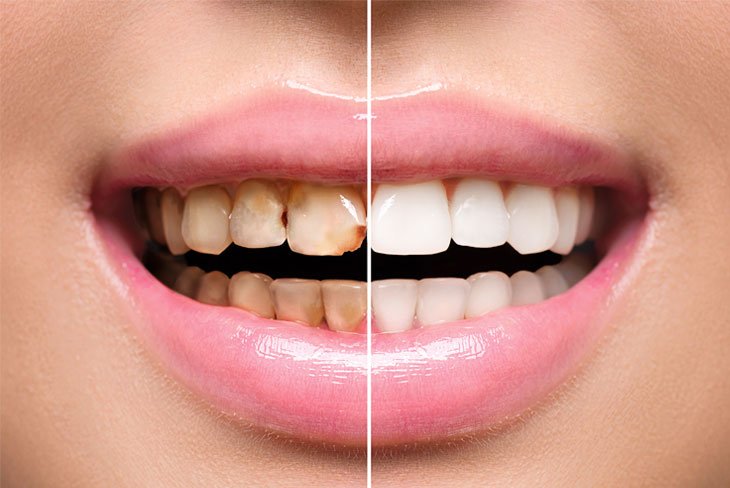Understanding the Different Types of Dental Fillings
1 comment

Whether it’s a sudden toothache or the dentist locating a cavity for the duration of your regular check-up, lots of us, have heard the scary word: “You’ll need a filling.” But as speedy as the selection is made to address the enamel, there’s some other critical step—deciding on the proper form of dental filling. This desire is more than most effective a formality. The form of filling used can affect your comfort, aesthetics, value, and durability. In this article, we’ll break down the one-of-a-kind varieties of dental fillings to be had in recent times, their execs and cons, and how to determine which one is proper for you.
Why Fillings Are Necessary
First, let us recall why fillings are vital. When a tooth is broken due to decay, a filling restores its normal shape and form. The decayed element is removed, and the distance is filled with a cloth that not only stops decay but also restores strength. While the idea is simple, the substances used have developed—from antique university silver to trendy, teeth-coloured composites.
Amalgam Fillings (Silver Fillings)
What are they?
Amalgam fillings are composed of a mixture of metals, including silver, mercury, tin, and copper. They’ve been used for more than a century and are seen for their durability. Pros: Very strong and long-lasting (can close 10–15 years or greater) Cost-effective Can resist robust chewing forces Cons: Noticeable silver shade; not perfect for visible enamel May increase and receive as authentic with temperature modifications, probable inflicting enamel cracks over time Contains mercury, which has raised health issues (though the FDA and ADA deem it secure for optimum adults) Best for: Back molars and their surrounding areas are not without problems; they are frequently greater in size than they appear.
Composite Resin Fillings (Tooth-Colored Fillings) What are they?
Made from a combination of plastic and high-grade glass particles, composite fillings are designed to restore the colour of your natural tooth.
Pros: Aesthetically charming—blends along with your enamel shade. Bonds right now to the enamel, offering a manual Less drilling is needed as compared to amalgam.Cons: Not as long-lasting as steel (usually lasts 5–10 years) More expensive than amalgam Can stain over the years with coffee, tea, or tobacco use Best for: Front enamel or any seen location where the situation appears.
Ceramic Fillings (Porcelain) What are they?
Made from porcelain, ceramic fillings are both long-lasting and aesthetically appealing. They’re often created in a dental lab and then bonded to the tooth. Pros: Highly resistant to staining Long-lasting (can, in the long run, be over 15 years) Matches the enamel colour thoroughly
Cons: More brittle than composite, it can withstand being massive to prevent breakage. More expensive than other types Typically calls for a couple of pass-to (if lab work is worried) Best for: Larger cavities or people seeking a long-term aesthetic solution.Gold Fillings (Cast Gold)
What are they?Made from a gold alloy, those fillings are custom-made in a dental laboratory and cemented into the area.
Pros: Extremely prolonged-lasting (can, in the long run, last 15–30 years) Doesn’t corrode Well-tolerated by manner of gum tissues Cons: It is an essential gold shade High fee Requires at the least visits to finish
Best for: People who need the most durability and aren't averse to the metallic appearance.
Glass Ionomer Fillings What are they? Made from an aggregate of acrylic and glass, glass ionomer fillings release fluoride, which protects the enamel from decay. Pros: Releases fluoride that can help prevent future decay. Good for youngsters and little one's enamel Bonds chemically to the enamel
Cons: Not very prolonged-lasting—commonly lasts a lot, much less than 5 years. Less aesthetic than composite resin Prone to wear and fracture
Best for: Non-chewing surfaces, small cavities, and pediatric dentistry.
How to Choose the Right Filling
There’s no one-length-fits-all method for dental fillings. Your dentist Mississauga will recommend a possibility primarily based on numerous elements: Location and period of the whole space Aesthetic worries Budget Personal options (e.g., mercury-loose substances) Allergies or sensitivities to effective metals
It’s also vital to don't forget durability. A less steeply priced filling might cost a bit less nowadays; however, it wears out quickly and will become steeply priced to update.
A Quick Word About Dental Anxiety
If you’re anxious about getting a filling, you're not alone. Many human beings avoid seeking remedies due to worry of pain or soreness. The real statistics show that
are fast, secure, frequent, easy, and painless, especially when local anesthesia is used. Some dental offices even provide sedation options to help anxious patients experience greater comfort.Final thoughts
There is no need to conflict with a tough-to-fill option, mainly when you are informed about your alternatives. Whether you prioritize aesthetics, variety of fees, or durability, this is a filling fabric that suits your needs. What is a tremendous way to make the proper preference? Discuss openly with your dentist in Mississauga, ask questions, and don't hesitate to share your concerns. After all, your smile is good, and it's certainly worth it.


Comments